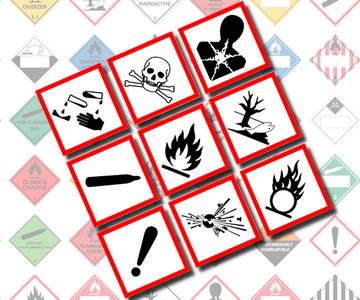
10 Types of WHMIS Labels and Their Symbol Meanings

WHMIS stands for Workplace Hazardous Materials Information System, which is used to provide health and safety info in Canadian workplaces. As required by the Occupational Health and Safety Act (OHSA), businesses must adhere to WHMIS requirements for labels on hazardous products. It is an employer’s responsibility to ensure all hazardous products that enter the workplace have been properly labelled.
The WHMIS safety labels alert users about the risks associated with the product. They are essential for ensuring the safety of employees in hazardous workplaces. With professional WHMIS training, workers can become familiar with this system and understand the meaning behind each label. They will also learn the protective measures on how to use and handle the dangerous products properly.
Here are the ten different types of WHMIS labels and their symbol meanings:
Type #1: Flame symbols

You may recognize this common safety symbol, which features a flame and a line underneath it. This WHMIS label’s meaning indicates that the product is a potential fire hazard, meaning that it can ignite easily. The item may also combust rapidly if not stored and handled with care. The symbol should be attached to flammable products, along with materials that have the potential for combustion or thermal decomposition.
Protect yourself from this hazard by:
- Keep the products away from heat, hot surfaces, or open flames.
- Do not smoke in proximity to the hazardous products.
- Use the products only in well-ventilated areas.
Type #2: Flame over circle symbols

The pictogram’s emblem depicts an “o” with the flame on top and a line below it. The “o” stands for oxygen. This WHMIS hazard symbol indicates that the product may cause a fire or an explosion if not stored and handled correctly.
This label represents three physical hazard groups in WHMIS: oxidizing gases (Category 1), oxidizing liquids (Category 1, 2, 3), and oxidizing solids (Category 1, 2, 3). While the physical states of the three oxidizer hazard classes vary, they all pose a risk of fire or explosion. Proper handling and storage measures must be taken with these types of hazardous products.
Protect yourself from this hazard by:
- Wear protective gloves and clothing to minimize physical contact.
- Remove all combustible wastes from the work area.
- Be careful about mixing oxidizers with water as they may cause volatile results.
Type #3: Exploding bomb symbols

The WHMIS safety symbol is represented by an exploding bomb. It indicates that the materials pose a severe fire and explosion hazard. Since these products are highly reactive and very volatile, they are rarely used in most workplaces. Any items with this label must be managed and stored under the strictest supervision. Specialized health and safety training will also be necessary.
Protect yourself from this hazard by:
- Store these products separately, avoiding large clusters or high-density collections.
- Avoid prolonged storage, especially with sizable quantities.
- Be mindful that even empty containers may contain dangerous residue.
Type #4: Compressed gas symbols

This WHMIS safety symbol depicts a gas cylinder. It is used for hazardous products that contain compressed gases, which include dissolved gas, compressed gas, liquefied gas, and refrigerated liquefied gas. The gases can be intentionally released by opening the cylinder valve. It may also be accidentally released via a broken or leaky valve.
These gases are considered dangerous because they are placed in a highly pressurized state. When an unsecured gas cylinder is broken, it can spin out of control with great force, resulting in severe injuries and damages. In addition, refrigerated liquefied gases are extremely cold, which may trigger cryogenic burns or other freezing injuries.
Protect yourself from this hazard by:
- Use the smallest amount of compressed gas possible to complete the task at hand.
- Inspect the cylinder containers and valves for physical damage.
- Make sure all valves are properly closed when the cylinder container is not in use.
Type #5: Corrosion symbols

This WHMIS hazard symbol depicts corrosive liquid dripping onto a hand and another onto a piece of metal. Hazardous items with this pictogram can destroy or damage metals. They may also cause permanent bodily damage, such as blisters, scarring, burns, or vision loss. Due to the toxicity of these products, proper storage and handling procedures must be followed.
Protect yourself from this hazard by:
- Inspect the products for leaks or damages before you handle them.
- Always wash your hands thoroughly after you handled the products.
- Do not mix hot water with the corrosive products.
Type #6: Skull and crossbones symbols

This WHMIS hazard symbol features a human skull and two crossed bones. It means that the product can cause poisoning or death. Users may be exposed to the toxicity through oral consumption, inhalation, or skin contact. Any poisonous products with Category 1 and Category 2 classifications can be fatal if swallowed, inhaled, or touched.
Protect yourself from this hazard by:
- Avoid eating, drinking, or smoking when handling these hazardous products.
- Keep surfaces clean and do not let the dust accumulate in the workplace.
- Perform standard first aid procedures in case you detect symptoms.
Type #7: Exclamation mark symbols

The exclamation mark in this WHMIS safety symbol indicates that a product is hazardous and can result in health consequences. These might include eye irritation, skin allergy responses, as well as organ toxicity. The exclamation mark is also sometimes used to denote products that are harmful to the ozone layer.
Protect yourself from this hazard by:
- Make sure the workplace surfaces are not contaminated by unprotected staff.
- Do not wear contaminated clothing outside of the work area.
- Report any signs of illness right away to the supervisor.
Type #8: Health hazard symbols

This pictogram shows a black silhouette of a person’s chest and head, with a white star extending from the middle of the chest. The WHMIS label indicates that a product is very hazardous and may result in serious long-term health effects. These include carcinogenicity, reproductive toxicity, and organ damage after single or prolonged exposure. There may also be other health effects which are not apparent right away.
Protect yourself from this hazard by:
- Minimize any skin contact with the hazardous product.
- Report leaks and spills immediately in the workplace.
- Wear protective clothing, eye protection, and respiratory protection.
Type #9: Environment symbols

The symbol in this pictogram depicts a tree without leaves and a dead fish. It represents harm to the environment. Labelling and classification of this hazard group is not mandatory, but a supplier may voluntarily choose to use it.
Protect yourself from this hazard by:
- Practice proper recycling protocols in your workplace.
- Minimize releasing harmful substances to the environment.
- Dispose the products through proper waste management channels, instead of dumping it down the drain or into bodies of water.
Type #10: Biohazardous infectious materials symbols

With a black circular border, this label is made up of the letter ‘c’ linked three times over a small circle in the centre. This WHMIS hazard symbol describes materials suspected of causing infections in humans and animals. Some examples in this hazard class include bacteria, fungi, viruses, and parasites.
Protect yourself from this hazard by:
- The products should only be handled by workers who have received specialized training.
- Follow infection control strategies to minimize the exposure to potential disease sources.
- Use ultraviolet light for disinfection in the workplace.
WHMIS labels provide guidance for navigating hazardous workplaces safely. You can learn more about these symbols and their meanings through Safety First Consulting’s WHMIS online course. This self-based training program equips you with comprehensive knowledge, allowing you to identify and manage various hazards in the workplace.


